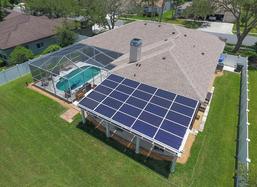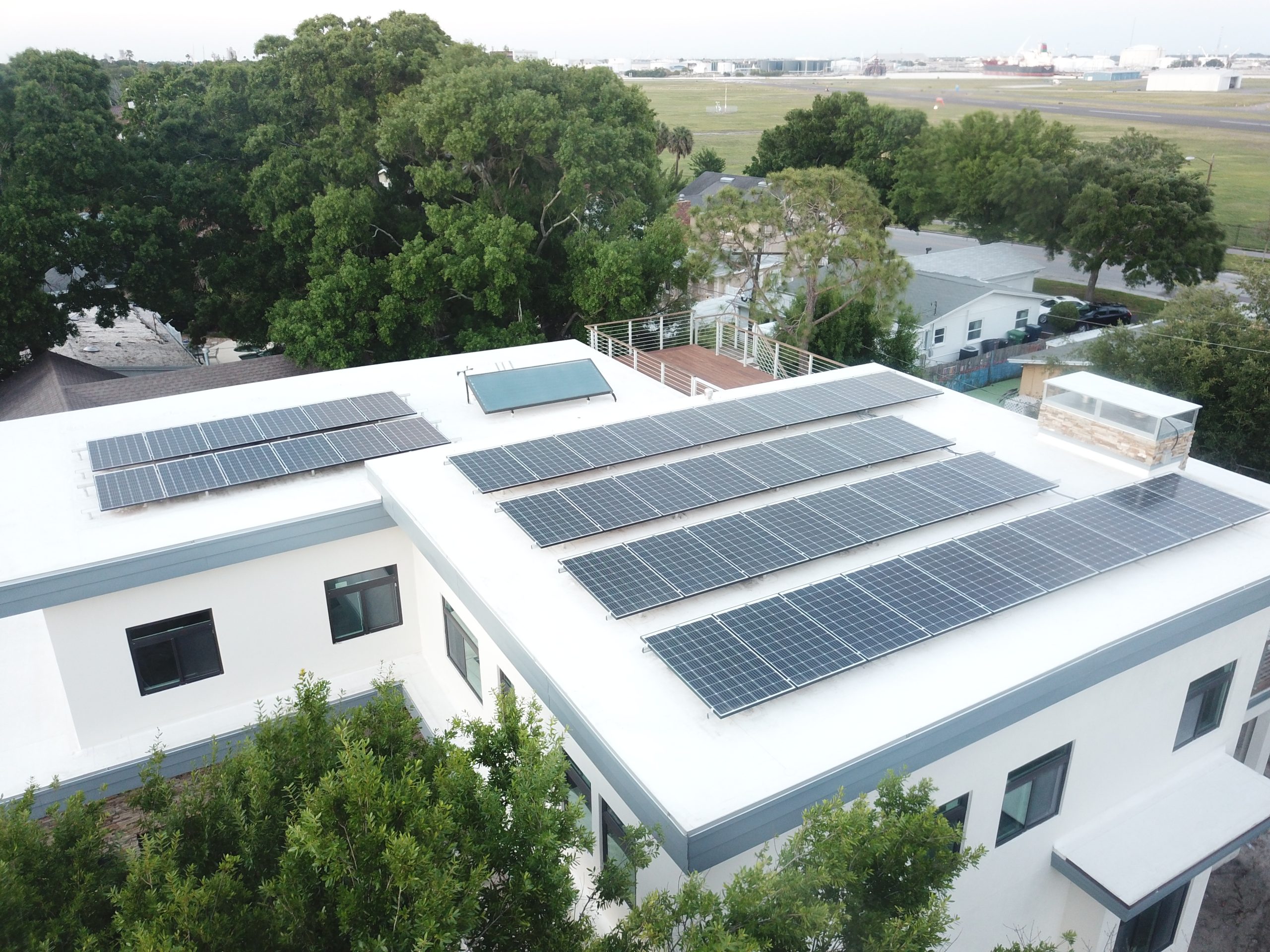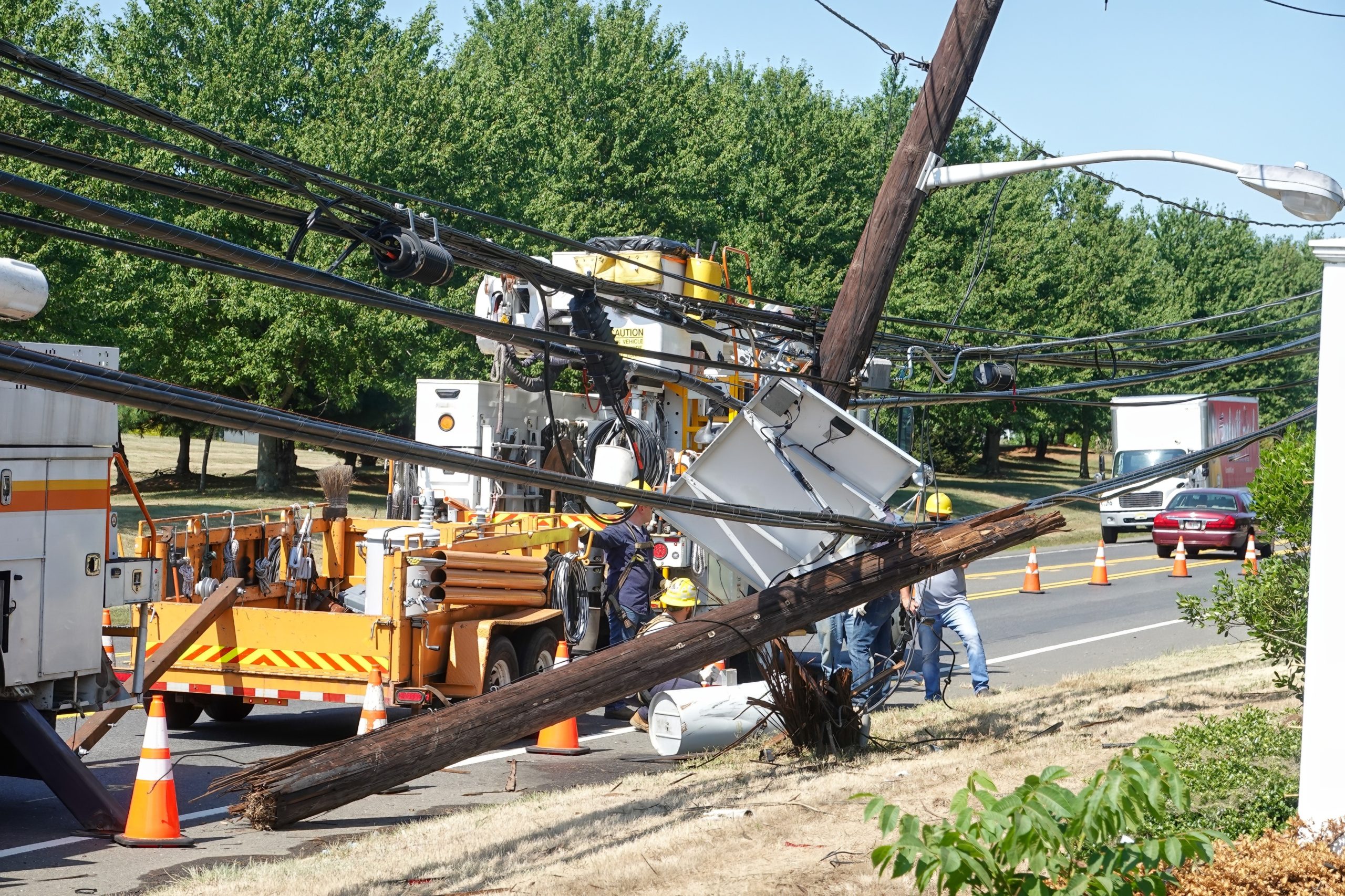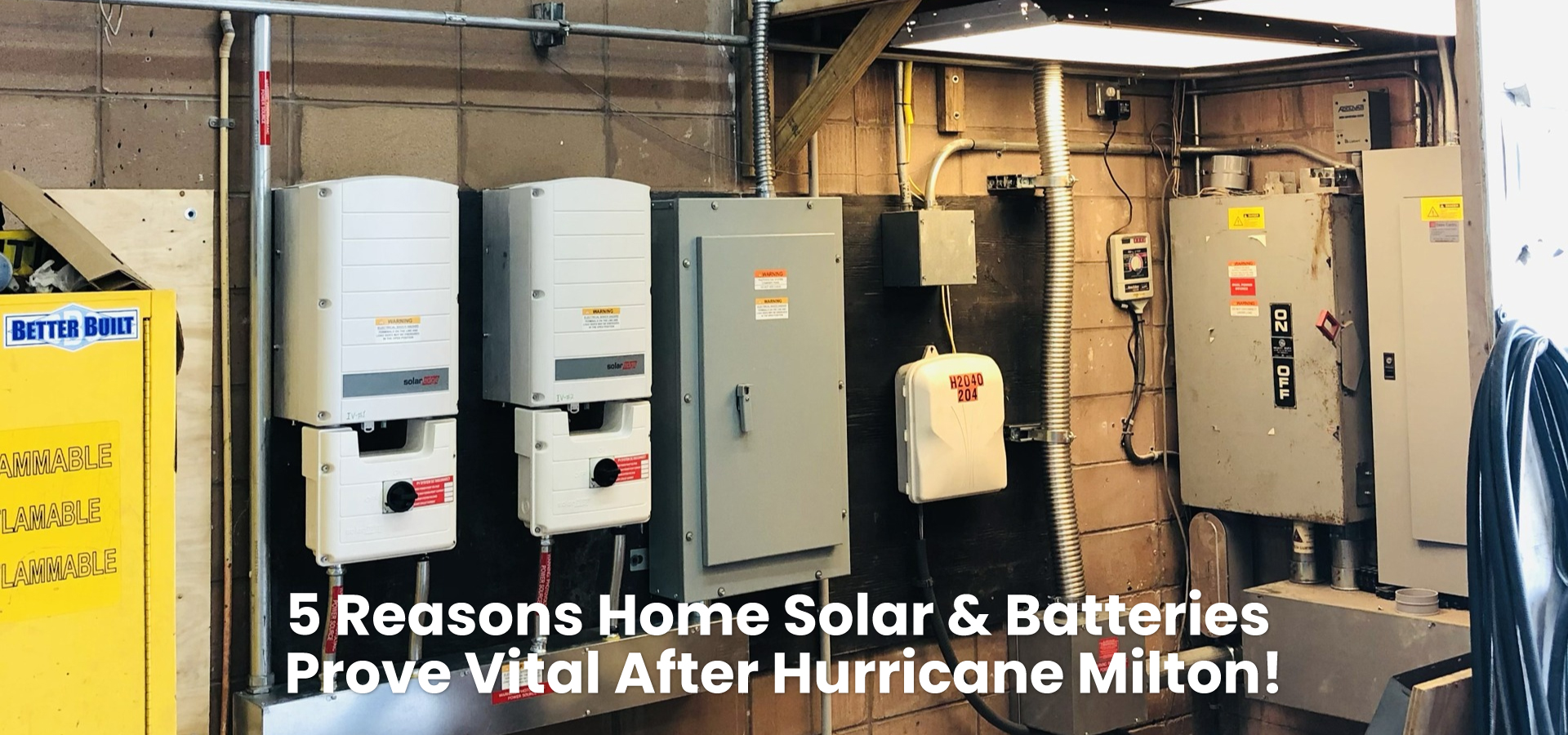 There are 2 main types of solar used in Florida; thermal solar which uses the heat from your roof to warm up your pool or fill your hot water tank, and photovoltaic solar which uses photons from the sun to generate electricity. Below are some of the common questions homeowners ask when they are shopping for a photovoltaic array to reduce their electric bill. Until the end of 20202 there is a 26% federal tax credit that you can get on solar AND a new roof if you install both in the same calendar year. This means that if you get a solar array for $10,000 you’ll get $2,600 back from the federal government in the form of a tax credit.
There are 2 main types of solar used in Florida; thermal solar which uses the heat from your roof to warm up your pool or fill your hot water tank, and photovoltaic solar which uses photons from the sun to generate electricity. Below are some of the common questions homeowners ask when they are shopping for a photovoltaic array to reduce their electric bill. Until the end of 20202 there is a 26% federal tax credit that you can get on solar AND a new roof if you install both in the same calendar year. This means that if you get a solar array for $10,000 you’ll get $2,600 back from the federal government in the form of a tax credit.
How much will solar cost?
This depends upon 2 factors: the square footage of your roof and the power needs (daily kilowatt usage) of your home. A customer with a new home in Wesley Chapel, and the cost of their system after the federal tax credit was $8,000. That system eliminated $110 per month in energy costs, and their payment on their system at a 4% loan is $78 per month. Instead of paying $110 per month to the electric company the customer is sending $78 per month to pay off their solar array. If financed, solar is always less expensive than paying the electric company, and solar adds to the value of your home.
How much will solar add to the value of my home?
A quick Google search on this subject will point you to several different studies made across 40 states that demonstrate how solar increases the resale of a home from 3% to 10%. Of course, if you sell during a deep recession you might not see this kind of gain. One customer whose home is valued at $220,000, their solar array generates $2400 per year in electricity, that’s $24,000 generated in the next decade. Their system was $16,000 after the federal tax credit, so that solar array will pay for itself in less than 7 years. If they sell their home in the future for just 2% more they will pocket $4,500 and walk away very happy.
How does the Federal Tax Credit on solar work?
The federal tax credit is 26% of the cost of any solar array on a home or business excluding solar pool heaters, which are considered a luxury purchase by the IRS. The credit can be used for solar hot waters heaters for the home, solar pool pumps and any photovoltaic array. The 26% tax credit for solar expires on December 31st, 2020. This is a TAX CREDIT, so you can’t use it unless you pay taxes to the federal government. If your annual household income is below $30,000 per year it might take you several years to use your tax credit. For instance, if you only pay $3,000 per year in federal taxes and you get a solar tax credit for $9,000 it will have to carry forward three years for you to recoup the full $9,000. The solar tax credit is dollar for dollar, if you own a business and pay taxes at the end of the year you can use the tax credit instead of writing a check to Uncle Sam. In this case you might owe $10,000 for 2020, but you had solar installed and you have a tax credit for $7,000. Send in the tax credit and $3,000 and you are paid up.
How does my solar array work at night?
It doesn’t. A solar array in Florida will generate power (even on a cloudy day) from about 8AM until sundown. Most of the systems we install are net metered to the power grid; during the day the system generates more than you need and these extra kilowatts are pushed back to the grid via a bi-directional meter installed by the electric company. These banked kilowatts are like rollover minutes on a cell phone, during the winter my system produces more than I need and these kilowatts are credited to my bill. In the summer when I crank up my AC my stored bank of kilowatts comes back to me.
What about during a power outage?
If you install an SMA inverter you will have power from your solar during the day, even if the electric company goes dark. Customers with SMA systems on their homes, have up to 2000 watts per inverter outlet available during an outage. Other inverters do NOT have this capability. If you want a 24 hour battery back-up system expect to spend 30%-70% more for a system. We expect battery prices to decrease as demand increases.
If you have any other questions please contact us today.



